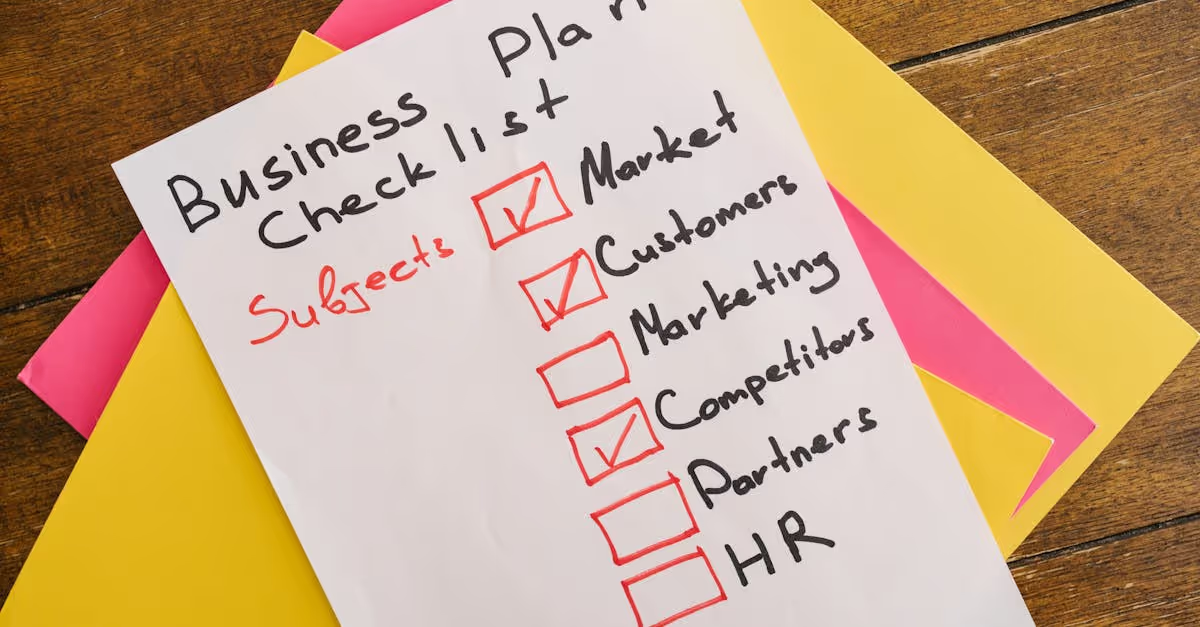In today’s fast-paced digital landscape, staying ahead of the competition means embracing the right technology. Many businesses are leveraging advanced tools that not only streamline operations but also enhance customer experiences. By understanding what tech your competitors are using, you can identify opportunities to elevate your own business strategy.
In today’s fast-paced digital landscape, staying ahead of the competition means embracing the right technology. Many businesses are leveraging advanced tools that not only streamline operations but also enhance customer experiences. By understanding what tech your competitors are using, you can identify opportunities to elevate your own business strategy.
From automation platforms to integrated customer communication systems, these technologies are reshaping how service companies operate. They provide valuable insights into customer behavior and optimize lead generation, ultimately driving growth. Let’s explore the essential tech trends that can give us a competitive edge and why adopting them is crucial for our success.
Understanding Market Competition
Understanding market competition involves analyzing the technologies and strategies competitors employ. By examining their approaches, we can gain insights into what drives their success. Knowledge of competitors' tech tools helps us identify trends, customer preferences, and operational efficiencies.
Key Technologies Used by Competitors
- Automation Platforms: Many competitors utilize automation platforms to minimize manual tasks, saving time and reducing errors.
- Customer Relationship Management (CRM) Systems: Competitors often implement CRMs to manage customer interactions and enhance relationship-building efforts.
- Integrated Communication Tools: These tools facilitate seamless communication between teams, improving response times and enhancing customer service.
Benefits of Emulating Competitor Technologies
- Increased Efficiency: Adopting effective technologies can streamline our processes and boost overall productivity.
- Enhanced Customer Experience: Technologies that improve the customer journey can lead to higher satisfaction rates and loyalty.
- Data-Driven Decisions: Access to business intelligence tools enables informed decision-making based on real-time data analytics.
Staying Ahead of Industry Trends
- Continuous Learning: Monitoring industry trends and technological advancements keeps us informed about emerging tools that can benefit our operations.
- Benchmarking Against Competitors: Regularly comparing our technology stack with competitors' platforms illuminates areas for improvement and innovation.
- Experimentation and Adaptation: Embracing new technologies fosters a culture of innovation, allowing us to adapt to customer needs and market changes efficiently.
By keeping these factors in mind, we can leverage competitors' insights to strengthen our position in the market, ultimately leading to improved performance and greater success.
Identifying Competitor Technologies
Understanding the technology stack of our competitors provides valuable insights into their operations, marketing, and customer engagement strategies. By identifying the tools and platforms they use, we can better position ourselves in the market.
Key Tools and Software
We rely on several tools to pinpoint the technologies our competitors use, including:
- SEMrush and Ahrefs: These platforms offer insights into competitors' SEO strategies, revealing keyword rankings and backlink profiles that highlight strengths and weaknesses.
- BuiltWith and Wappalyzer: These services analyze websites to unveil their technology stack, identifying tools used for email marketing, customer support, and other critical functions.
- Ghostery: This tool provides data on competitors' ad tech, analytics, and CRM systems, allowing us to understand their customer interaction methodologies.
Utilizing these tools helps us benchmark against competitors and uncover opportunities for improvement in our technology choices.
Innovative Methods
We can enhance our understanding of competitor technologies through various innovative methods:
- Job Listings: Examining job postings helps us infer required technical skills and tools, thus indirectly revealing the tech stack companies prioritize.
- SWOT Analysis and Benchmarking: Employing frameworks like SWOT (Strengths, Weaknesses, Opportunities, Threats) enables us to assess the effectiveness and business impact of competitors' technologies.
- Market Positioning Maps: Visual tools that plot technology adoption against industry standards highlight gaps and opportunities, informing our strategy.
By applying these methods alongside technological analysis, we can more effectively align our systems with successful practices observed in the industry.
Benefits of Adopting Competitor Tech
Adopting technology that competitors utilize presents multiple advantages that streamline operations and enhance customer satisfaction. Below are some critical benefits we observe from embracing these technological advancements.
Increased Efficiency
- Technology automates repetitive tasks, reducing human error and allowing employees to concentrate on higher-value activities. This transition accelerates deliverables and improves productivity metrics significantly.
- Examples include automated scheduling software and project management tools that minimize administrative workloads and decrease project delays, enabling teams to operate more efficiently.
Enhanced Customer Experience
- Businesses can leverage technology to deliver personalized and seamless customer experiences, leading to increased satisfaction and loyalty. Real-time feedback and support capabilities result from these advancements.
- Tools such as AI chatbots and self-service portals allow for immediate assistance, creating superior customer interactions and enhancing retention rates. These technologies cater to user preferences, setting businesses apart in a crowded marketplace.
Strategies for Implementation
Effective implementation of new technology requires a structured approach. By following these strategies, we can ensure that the integration process aligns with our business needs and goals.
Assessing Your Current Tools
- Map all existing software, hardware, and network systems to understand the technology landscape.
- Use surveys and interviews to gather insights on daily tool usage among employees.
- Identify pain points such as frequent downtimes, manual tasks, and workflow redundancies that hinder productivity.
- Evaluate the compatibility of current tools with business objectives, focusing on scalability and feature gaps. This comprehensive assessment lays the groundwork for informed technology investments.
Integration Challenges
- Technical Barriers: Outdated systems often resist integration, leading to delays and operational bottlenecks.
- Employee Resistance: Without adequate training, employees may struggle to adopt new technology, resulting in underutilization.
- Lack of Support: Insufficient technical or administrative support can complicate the integration process and stifle ongoing use.
- Cross-Departmental Impact: New tools can affect multiple teams; if coordination is poor, it can create workflow friction and disrupt collaboration.
Addressing these challenges involves careful planning, continuous training, clear communication, and dedicated support systems to foster a smooth transition to new technologies.
Staying Ahead of the Curve
Staying informed about emerging technologies keeps businesses competitive in a rapidly changing environment. Embracing advanced tools allows us to enhance operations and improve customer interactions. Key strategies for remaining at the forefront include benchmarking against competitors and fostering a culture that encourages innovation and adaptation.
Leverage Competitive Insights
Analyzing our competitors' technology stacks provides invaluable insights. Tools such as SEMrush and Ahrefs help us uncover SEO strategies that drive traffic to competitor sites. Monitoring their use of customer relationship management (CRM) systems and project management platforms can reveal opportunities for improvement in our processes. Understanding these aspects allows us to refine our strategies for greater efficiency.
Implement Cutting-Edge Tools
Integrating advanced tools streamlines workflows and enhances productivity. Automation platforms reduce the burden of repetitive tasks, allowing our teams to concentrate on high-value activities. For instance, we can utilize automated scheduling software to optimize our resource allocation. AI and chatbots provide real-time customer support, boosting satisfaction and retention rates.
Continuous Learning and Adaptation
Commitment to ongoing learning ensures we stay ahead of industry trends. We can engage in regular training sessions to familiarize our teams with new technology. Collaboration with industry experts and peer networks reveals insight into best practices and innovations. By continuously adjusting our strategies, we maintain a proactive approach to competitor technology adoption.
Assess Integration Challenges
Identifying potential barriers to technology integration is crucial. Recognizing technical hurdles and employee resistance helps us devise effective solutions. Developing a detailed implementation plan includes gathering employee input and providing necessary training. Through transparent communication, we facilitate a smoother transition to advanced technologies, minimizing disruptions while maximizing benefits.
By focusing on these strategies, we equip ourselves with the tools needed to thrive in the competitive landscape.
Conclusion
Embracing the technology our competitors use is no longer optional; it’s a necessity for thriving in today’s fast-paced market. By leveraging advanced tools and insights, we can enhance our operations and elevate the customer experience. This proactive approach not only drives growth but also positions us as leaders in our industry.
As we adapt and integrate these technologies, we must prioritize continuous learning and innovation. Staying informed about emerging trends and assessing our integration strategies will ensure we remain competitive. By doing so, we’ll not only keep pace with our rivals but also set ourselves apart, ultimately achieving greater success in our business endeavors.
Frequently Asked Questions
Why is adopting advanced technology important for businesses today?
Businesses must adopt advanced technology to stay competitive in the digital landscape. Automation and integrated communication systems can enhance operations and improve customer experiences, leading to efficiency and growth.
What are some key technologies mentioned in the article?
Key technologies include automation platforms, Customer Relationship Management (CRM) systems, and integrated communication tools. These technologies help streamline processes and enhance customer interaction.
How can understanding competitor technology benefit a business?
By analyzing competitors' technology stacks, businesses can discover insights into their operations and strategies. This knowledge helps identify opportunities for improvement, ultimately boosting performance and growth.
What tools can help analyze competitor technologies?
Tools like SEMrush, Ahrefs, BuiltWith, Wappalyzer, and Ghostery are recommended for analyzing competitors' SEO strategies and technology stacks to gain critical insights into their customer engagement methodologies.
How can businesses enhance customer experiences through technology?
Businesses can improve customer experiences by using technologies such as AI chatbots and self-service portals. These tools offer personalized assistance and quick responses, resulting in higher satisfaction and loyalty.
What challenges might arise when implementing new technology?
Challenges may include technical barriers, employee resistance, and a lack of support. Proper planning, continuous training, and clear communication are crucial to address these issues and ensure successful integration.
Why is continuous learning important for businesses?
Continuous learning helps businesses adapt to emerging technologies and industry trends. Staying informed enables them to remain competitive and innovative in a constantly evolving market.
How can businesses assess their current technology effectively?
To assess current technology, businesses should map their existing software and hardware, gather employee insights, and identify pain points that hinder productivity. This structured approach facilitates informed decisions on technology adoption.
👉 Book a Demo of ProValet Now to see how automation can help your business keep customers safe and satisfied all summer long.








